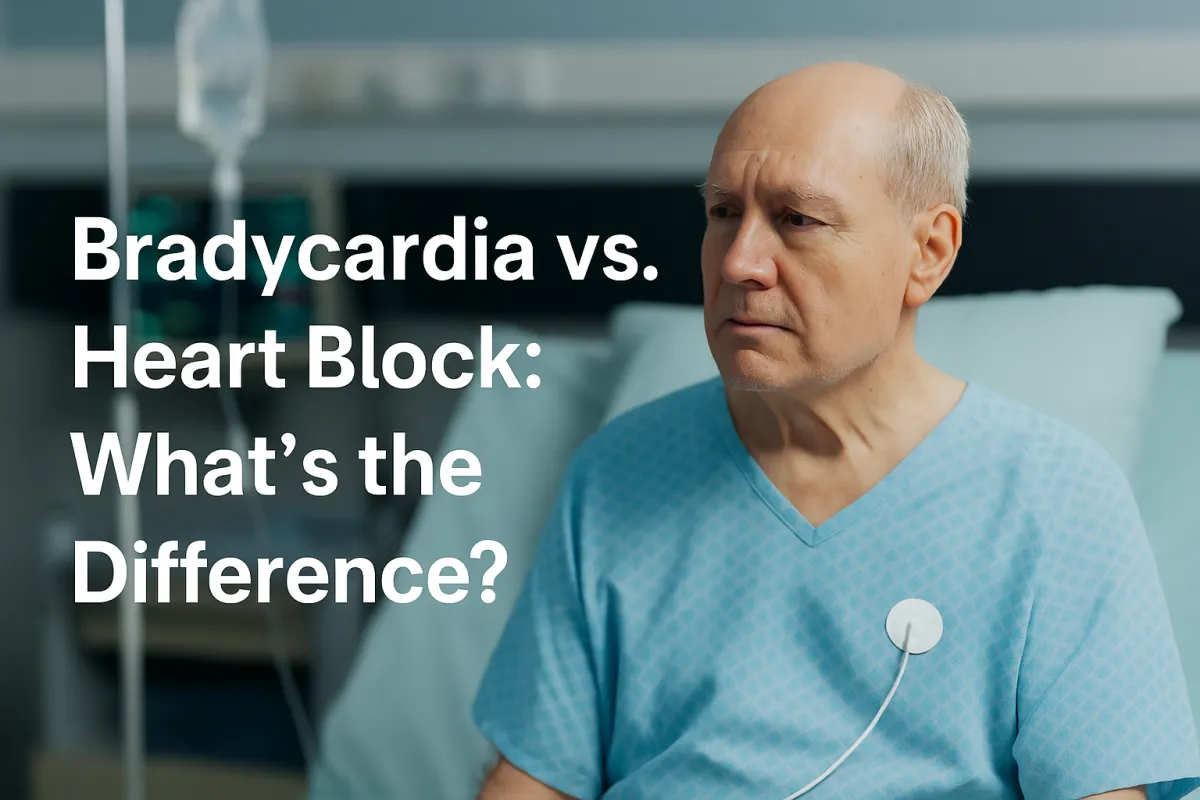
Bradycardia vs Heart Block: Understanding the Difference
Introduction
Slow heart rhythms can be challenging to interpret, especially when distinguishing between bradycardia and heart block. While both conditions involve a decreased heart rate, their causes, clinical implications, and treatments can be very different.
At APRNWORLD.com, our Arrhythmia Recognition and ECG Interpretation Courses are designed to help healthcare professionals quickly differentiate between these rhythms and respond appropriately.
What is bradycardia?
Definition: Bradycardia is a general term for a heart rate less than 60 beats per minute in adults, originating from the sinus node.
Causes:
Physiologic: athletes, sleep, relaxation
Pathologic: hypothyroidism, hypothermia, myocardial infarction
Medication-induced: beta-blockers, calcium channel blockers, digoxin
ECG Characteristics:
Regular P waves preceding each QRS
Consistent PR interval
Slower ventricular rate
What is heart block?
Definition: Heart block refers to impaired conduction of electrical impulses from the atria to the ventricles. This can lead to bradycardia, but the mechanism is different from sinus bradycardia.
Types of AV Block:
First-Degree AV Block – PR interval > 0.20 sec, all P waves conducted
Second-Degree AV Block
Mobitz I (Wenckebach): progressive PR prolongation until a beat is dropped
Mobitz II: dropped QRS without PR prolongation
Third-Degree (Complete) AV Block – no association between P waves and QRS complexes
Causes:
Myocardial infarction
Fibrosis of conduction system
Electrolyte imbalances
Drug toxicity
Key Differences Between Bradycardia and Heart Block
Bradycardia originates in the sinus node and is characterized by a normal P–QRS relationship with consistent PR intervals. In contrast, heart block occurs due to impaired conduction within the AV node or the heart’s conduction pathways, often resulting in altered or absent coordination between P waves and QRS complexes.
While bradycardia is frequently caused by physiologic factors such as athletic conditioning or by medications, heart block typically stems from structural damage or disease of the conduction system. On ECG, bradycardia presents with normal atrioventricular conduction, whereas heart block may show prolonged or variable PR intervals depending on the type. Management also differs—bradycardia often resolves with treatment of reversible causes, while higher-degree heart blocks may require temporary or permanent pacing.
Management Overview
Bradycardia: Treat the underlying cause; symptomatic cases may require atropine, dopamine, or pacing.
Heart Block: Depends on degree; Mobitz II and third-degree often require permanent pacing.
Why This Matters for Healthcare Professionals
Misinterpreting heart block as simple bradycardia—or vice versa—can delay life-saving interventions. With APRN WORLD’s ECG courses, you’ll learn:
Step-by-step rhythm analysis
Identifying subtle conduction abnormalities
Applying ACLS protocols for bradyarrhythmias
📍 Start your training at APRNWORLD.com










